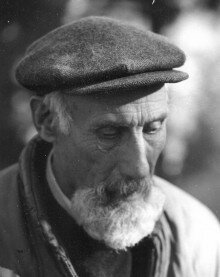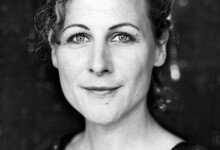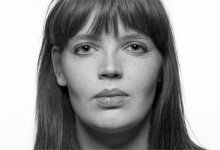
Robert Lax was born in Olean, New York, and spent the latter half of his life living on the islands of Kalymnos and Patmos in Greece. He was once named “among America’s greatest experimental poets” by Richard Kostelanetz, and although Lax’s work was lauded by the likes of Ian Hamilton Finlay, Maurizio Nannucci, Nicholas Zurbrugg and Emmett Williams, he is still best known in the US as a friend to Thomas Merton, the poet and Trappist monk. In fact, only a small portion of Lax’s writing has been published, and much of it was out of print until recently. His work has seen a resurgence in the past few years with the publication of several new volumes: Poems (1962-1997), edited by John Beer; A Hermit’s Guide to Home Economics; and the biography Pure Act: The Uncommon Life of Robert Lax written by Michael N. McGregor.
In his introduction to Poems (1962–1997), John Beer describes Lax’s first collection, The Circus of the Sun (published in 1959), as “effusive and grandly metaphysical.” Lax’s writing underwent a serious shift with the emergence of his second book, the 1962 collection New Poems. The poet Susan Howe compared Lax’s early work to the black-on-black paintings of Ad Reinhardt, and although Beer refers to Lax’s second book as “often cryptic and relentlessly abstract,” he also notes Lax’s variety, which includes: “compressed humorous sketches (Episodes), abstract poems restricted to color words (Black & White), extended prose journals, and spiritual meditations (21 Pages).”
As seen in ‘Kalymnos: November 29, 1968’ Lax’s lines are beyond spare, sometimes to the extent that individual words require multiple lines. Beer writes, “Lax recognized that he had made a breakthrough to a new form of poetic composition, one organized on the basis of the column rather than the line.” The visual appearance of Lax’s work led some to categorize him as a concrete poet, although Beer (and others) agree that never really seemed quite right:
The second section of ‘Kalymnos: November 29, 1968’ begins simply: “late at / night // I saw / them // costa & / the others.” Although it's a familiar scene on the island of Kalymnos, Lax allows individual words to stand squarely on their own and carry their full physical and sonic weight:
the sponges
too
unloaded them
first
in burlap
bags
then hoisted
them onto
their backs
trotted up
the stone
steps
plodded up
a steep
hill
at mid-
night
mid-
night
to the
store-
house
Beer believes the “signal quality” of Lax’s work to be “it’s assurance, less in its own abilities than in the potential for the simplest words and most common experiences to speak across our human separateness.”
In his introduction to the sequence, Michael N. McGregor says that ‘Kalymnos: November 29, 1968’ showcases:
Lax was born Jewish but later converted to Catholicism. As McGregor notes, he was also influenced by Zen Buddhism, Kabala and Chinese philosophy. David Wojahn, reviewing Poems (1962-1997) for Numero Cinq, stated:
Lax authored over two dozen books of poetry and prose. Before moving to Greece to live a quiet life with ample time for writing and observation, Lax attended Columbia University in New York City and worked as a film critic for Time magazine and as writer/editor for the New Yorker. He also spent brief stints as a screenwriter and as a teacher at Connecticut College and the University of North Carolina.
Bibliography
A Hermit’s Guide to Home Economics, New Directions, New York, 2015
Poems (1962–1997), Wave Books, Seattle, 2013
Speaking Into Silence, Stride, Exeter, 2001
Earth & Sky, Hawkhaven Press, San Francisco, 2000
Circus Days & Nights, Overlook Press, Woodstock, New York, 2000
Journal F: Kalymnos Journal, Pendo, Zurich, 1997
A Thing that Is: New Poems, Overlook Press, Woodstock, New York, 1997
Love Had a Compass: Journals and Poetry, Grove Press, New York, 1996
33 Poems, New Directions, New York, 1988
21 Pages, Pendo, Zurich, 1984
A Poem for Thomas Merton, Journeyman Books, New York, 1969
New Poems, Journeyman Books, New York, 1962
The Circus of the Sun, Journeyman Books, New York, 1959
Links
Robert Lax Archives at St. Bonaventure University
‘Robert Lax: Master Minimalist’, Michael N. McGregor’s introduction to ‘Kalymnos: November 29, 1968’ for Poetry
‘A Pocket Epic & the Hermit Poet: A Review of Robert Lax’s Poems 1962-1997 & Lorine Niedecker’s Lake Superior’ by David Wojahn, Numero Cinq
‘The Posthumous Emergence of a Major Poet from Olean’ by Anthony Bannon, The Buffalo News
‘A Visit With Robert Lax’ by James Uebbing, Columbia College Today archives




